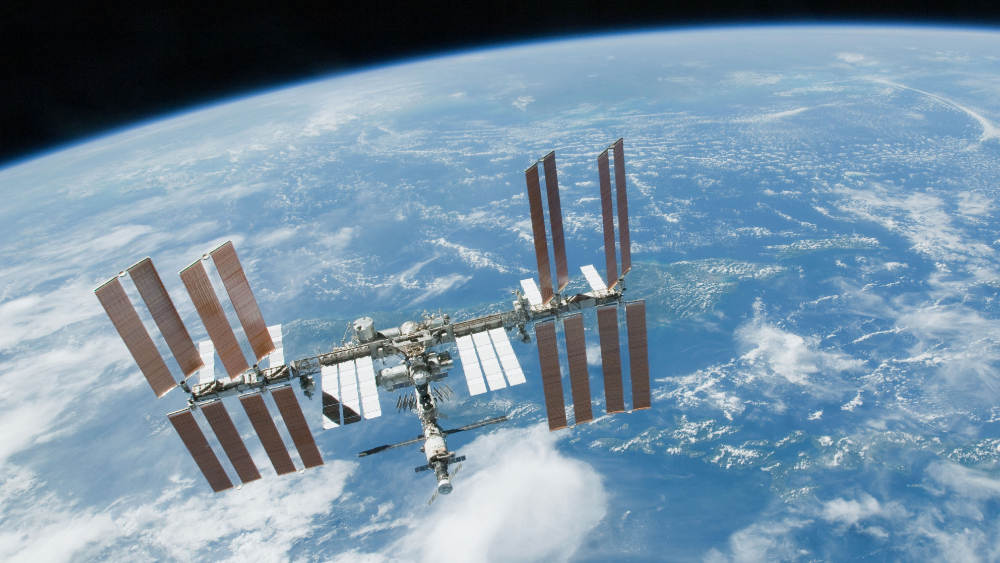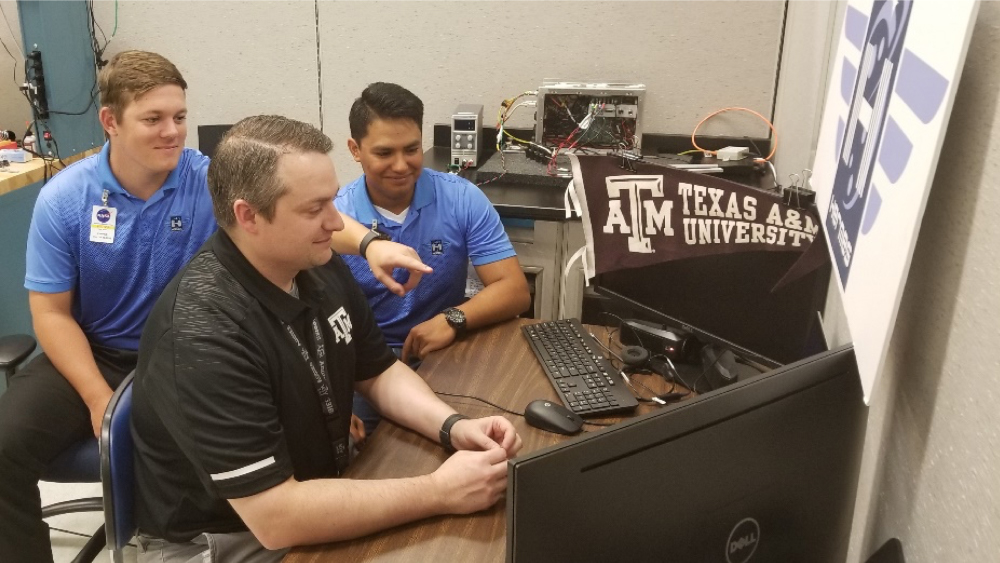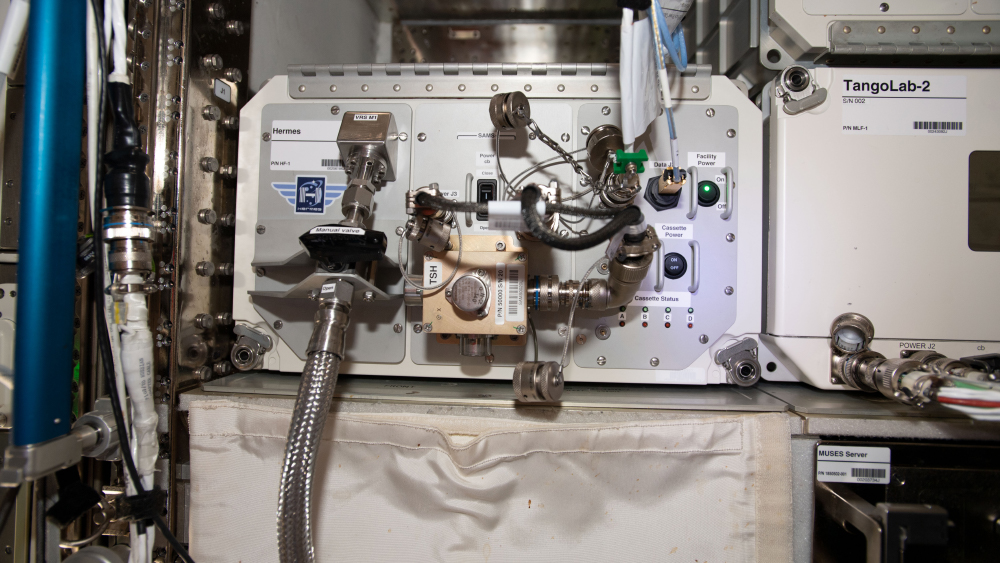
In the early hours of July 17, International Space Station flight engineer Christina Koch received the command from NASA to “activate Hermes power.” With the flip of that switch, the two-year development project became live online. Texas A&M University students Dustin Tish, Jeremy Coffelt and Luis Orozco were on hand at the Hermes command console at NASA’s Johnson Space Center to assist the project’s scientists, engineers and project manager in developing and activating the Hermes facility, a first Class-1E platform that provides scientists with a unique capability for ongoing microgravity research.
The students were ecstatic as they witnessed the system begin its bootup, configuration and initial operation. Tish and Coffelt are seniors in the Mechatronics program and Orozco is a senior in the Electronic Systems Engineering Technology program within the Department of Engineering Technology and Industrial Distribution.
“I can’t believe we are now able to command the Hermes facility while it’s aboard the International Space Station from here at the Johnson Space Center,” stated Hermes project manager Veronica Saucedo. “With the help of our three students the system came up beautifully and appears to be completely operational. The pictures and data we are receiving truly exceed our expectations.”

The team of students were responsible for all facets of the command and control system within Hermes. Tish was tasked with all of the mechanical aspects of the project, Orozco was responsible for all the real-time operating system-based code running on six different microcontrollers and Coffelt was the software lead for all of the management, communications and user interface code written in Python for the BeagleBone Black device.
"As one of my first projects, I couldn’t be more pleased with the systems performance," said Dr. Kristen John, Hermes project scientist and principle investigator. "Dustin and Luis were an integral part of our team and Jeremy was hired as a summer intern to actually perform much of the system configuration and checkout from our command console here at Johnson Space Center. Jeremy’s first task upon arrival at NASA was to author the Hermes system commissioning plan. We could not have done this without them!"
The project, which began as a capstone design two years ago, was sponsored by Texas Space Research Applications and Technologies (T STAR), a Bryan-based startup company that was contracted to develop and deliver the prototype system. Once the prototype passed all of NASA’s testing and operational validation, T STAR led an applied research project in partnership with the Texas A&M Mobile Integrated Solutions Laboratory to deliver four operational systems.
“Nothing is more satisfying than to bring this type of real-world, experiential learning back to Texas A&M,” said Matt Leonard ’86, retired NASA program manager and president of T STAR. “I look forward to continuing this type of space-based product development and helping NASA meet its mission objectives while creating the motivation for high-quality engineering students to go beyond their classroom/laboratory education.”